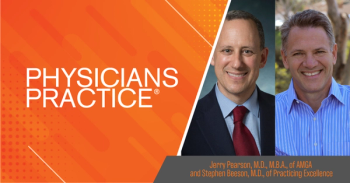
Private equity in healthcare
The peculiarities of healthcare makes private equity investments a fraught proposition.
As is said, “all that glitters is not gold.” When it comes to private equity’s incentives aligning with fiduciary obligations of physicians and federal and state regulatory requirements related to patient care, there is often a disparate gap between the two. What is private equity? As one
Definitions of private equity differ, but here we include the entire asset class of equity investments that are not quoted on stock markets. Private equity stretches from venture capital (VC)—working with early-stage companies that may be without revenues but that possess good ideas or technology—to growth equity, providing capital to expand established private businesses often by taking a minority interest, all the way to large buyouts (leveraged buyouts, or LBOs), in which the private equity firm buys the entire company. When the target is publicly traded, the private equity fund performs a public-to-private transaction, removing the target from the stock market. But buyout transactions usually involve private companies and very often a particular division of an existing company.
As I am writing this article, I am recalling statements that were made both by my Father and by a myriad of professors at Vanderbilt during the course of my MBA. Healthcare is different than other industries, such as automobile manufacturing or potato chip processing. The efficiencies that one may be able to obtain through standardization of processes do not work with patients because of the individual nuances, complications that can arise during surgery or treatment due to anatomical differences, newly discovered pathology, or allergies. Additionally, at this stage of the game, most, if not all hospitals, have limited the number of medical devices and pharmaceuticals that can be utilized on a regular basis, while having express exceptions that require approval for outliers so patient care is not compromised. Thereby, appropriately taking advantage of economies of scale, typically through a group purchasing organization (
With this background in mind, let’s address the
FTC v. U.S. Anesthesia Partners, Inc., Case No. 4:23-cv-03560 (S.D. Tex. Sept. 21, 2023) – highlighting the Federal Trade Commission’s focus on anticompetitive behavior involving a “scheme to consolidate anesthesia practices in Texas, drive up the price of anesthesia services provided to Texas patients, and increase their own profits.”United States ex rel. Medrano and Lopez v. Diabetic Care Rx LLC, d/b/a Patient Care America, et al., Case No. 15-cv-62617 (S.D. Fla.) – signifying the first False Claims Act case settlement that involved a private equity firm. In its press release, the Department of Justice announced, “that compounding pharmacy Diabetic Care Rx LLC, or Patient Care America (PCA), PCA’s Chief Executive Officer Patrick Smith, PCA’s former Vice President of Operations Matthew Smith, and private equity firm Riordan, Lewis & Haden Inc. (RLH) have agreed to generate referrals of prescriptions for an expensive pain creams, scar creams, and vitamins, regardless of patient need, which were reimbursed by TRICARE, the federal health care program for military members and their families [for a total of $21.36 million].”- United States ex rel. Ebu-Isaac v. Insys Therapeutics, Inc., 16 Civ. 7937-JLS, 2021 WL 3619958 at *10 (C.D. Cal. June 9, 2021) – ultimately settling for $8.99 million and noting that the private equity company’s motion to dismiss was denied by the U.S. District Court, which found that the company could be found liable through its portfolio company – a specialty pharmacy – because the mere use of separate business entities and the notion that the private equity company itself did not submit the claims was not persuasive.
This brings us to recent HHS-OIG items. First, in September 2023, the Office of Management and Budget approved the
In sum, understanding the applicable laws, aligning incentives to reflect reasonable returns that do not violate fraud, waste and abuse, securities, and antitrust laws is critical to effectively using private equity as a funding or ownership source. Healthcare is different because people are different. Having worked in the operating room and dietary departments in a hospital, as well as being a top performing sales consultant for major medical device companies who was in the operating room on a daily basis and witnessed the phenomenon of how anatomical variances, underlying conditions, and known and unknown drug reactions alter the length of time a case takes and the equipment (large and small) that needs to be utilized, gives me a different perspective than most lawyers. As Congress and government agencies place increased scrutiny on both investment returns and patient care issues, providers, private equity firms, and other entities should evaluate and evolve on a continual basis.
Rachel V. Rose, JD, MBA, advises clients on compliance, transactions, government administrative actions, and litigation involving healthcare, cybersecurity, corporate and securities law, as well as False Claims Act and Dodd-Frank whistleblower cases.
Newsletter
Optimize your practice with the Physicians Practice newsletter, offering management pearls, leadership tips, and business strategies tailored for practice administrators and physicians of any specialty.








